Info
Subfamily: Chloridoideae
Genus etymology: Eragrostis = "love grass" [Greek] unclear origin, other etymologies such as "early grass" or "very grass" have also been speculated
Species etymology: cilianensis = From Cigliano, Italy, although this is found across much of Afroeurasia
Photosynthetic type: C4 (warm season)
Nativity: naturalized - accidental
First recorded in Hawaiʻi: 1864
Map
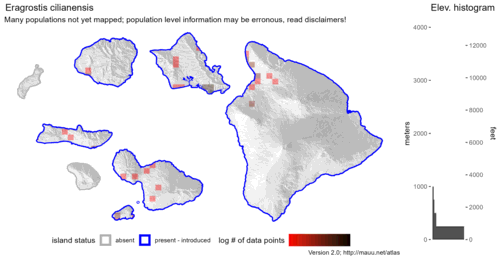

Inflorescence
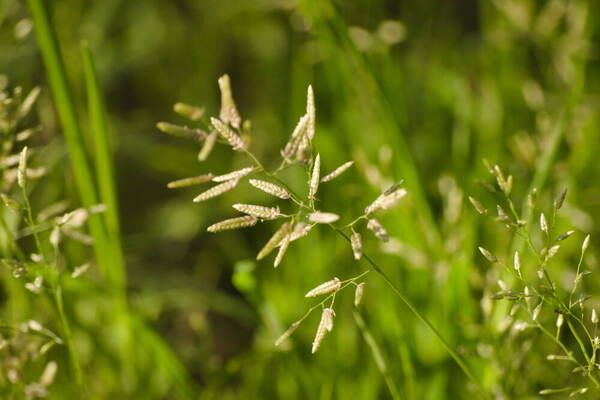
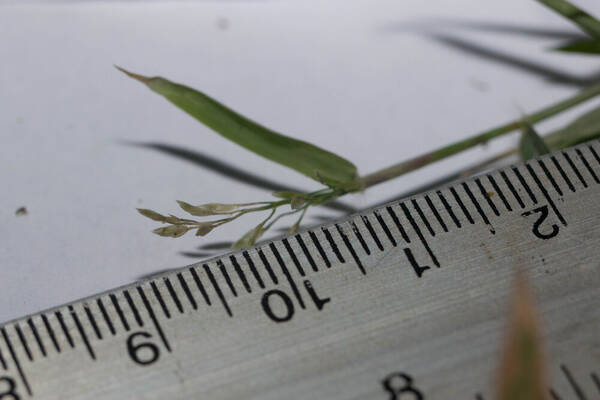

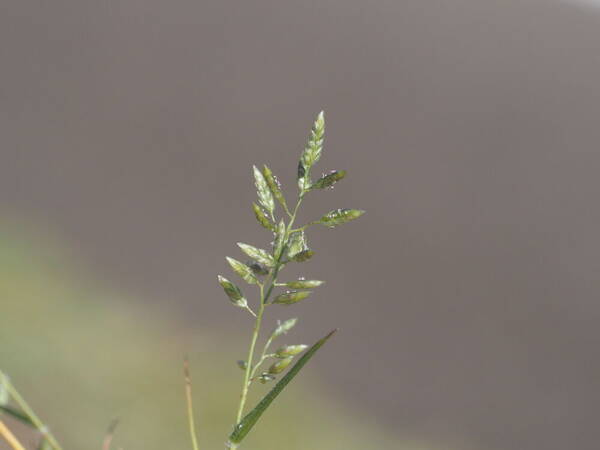
Habit
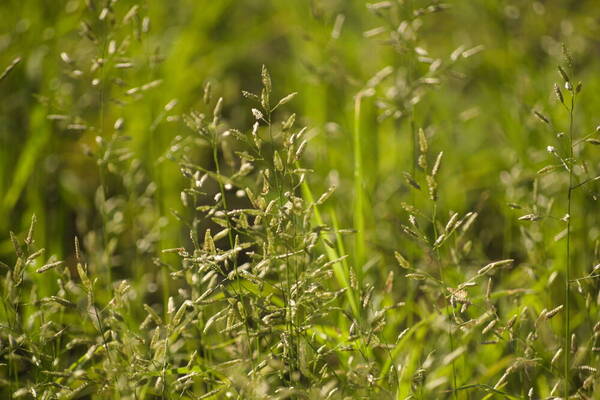

Spikelets
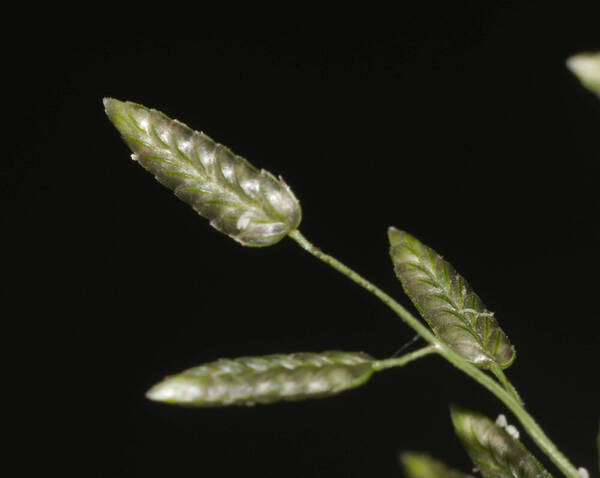

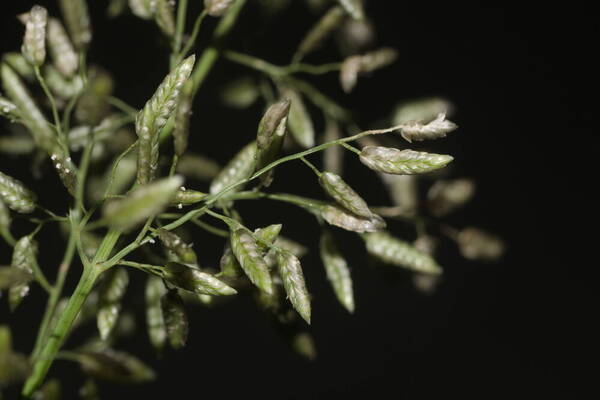
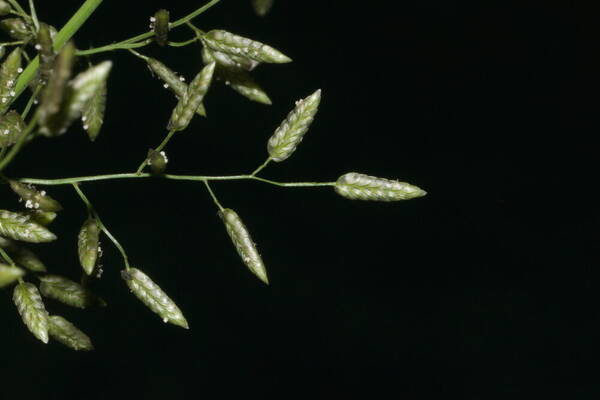
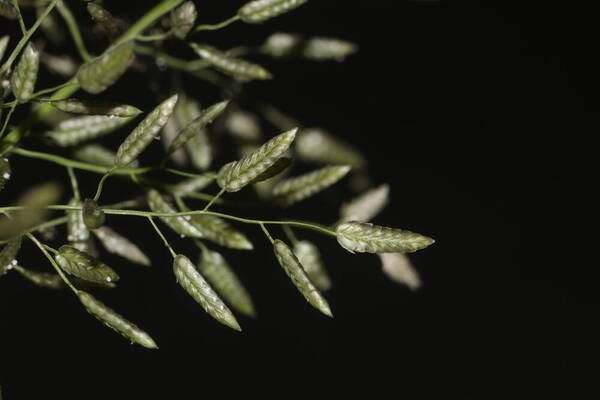
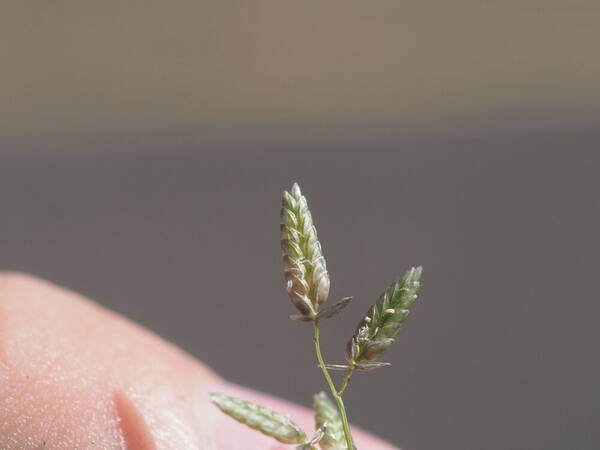
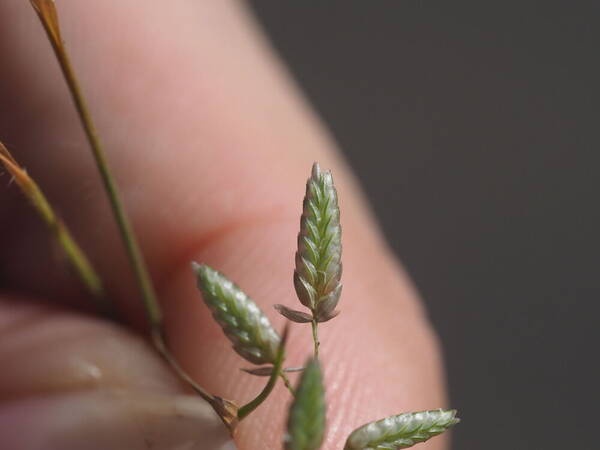
Collar
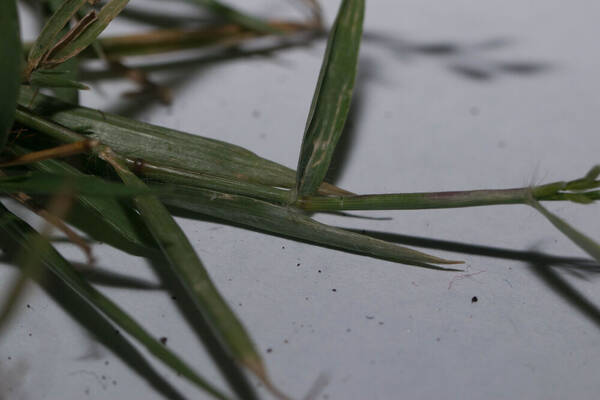
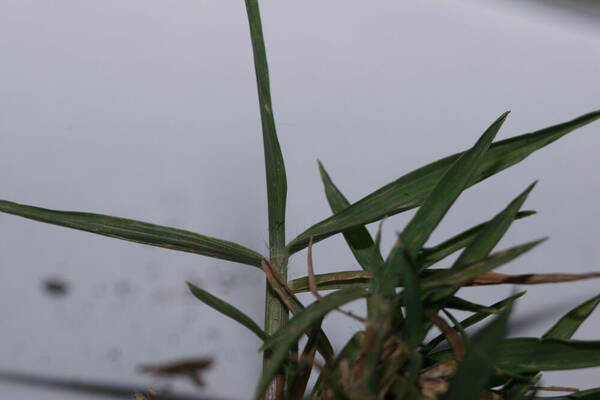
Description
Loosely tufted annual; culms 10–90 cm. high, erect or ascending. Leaf-blades flat, up to 15 cm. long, 8 mm. wide, mostly glabrous and usually with a row of warty glands along the margin. Panicle ovate, 4–30 cm. long, fairly dense, contracted, stiffly branched, usually with glands on pedicels and branchlets. Spikelets 5–60-flowered, narrowly ovate to narrowly oblong, rarely linear, 3–20 mm. long, 2–4 mm. wide, pallid yellowish green to leaden grey, breaking up from the base, the rhachilla often breaking off above the glumes before all the lemmas have fallen; glumes subequal, ovate, boat-shaped, 1.5–2.2 mm. long, 1–3-nerved, often glandular on the keel, acute; lemmas broadly ovate to subrotund, (1.7–)2–2.8 mm. long, chartaceous, often glandular on the keel, the lateral nerves distinct, emarginate or obtuse (occasionally bluntly acute) when flattened, usually obtuse in side view; palea ± scabrid on the keels, persistent; anthers 3, 0.3 mm. long. Caryopsis typically subglobose, 0.5(–0.7) mm. long, dark reddish brown, occasionally oblong. Fig. 65.
(Description source: Clayton, W.D. 1970. Flora of Tropical East Africa. Gramineae (Part 1). Crown Agents for Oversea Governments and Administrations, London. 176 pp. )
Annual up to 75 cm high; leaves flat or inrolled, sometimes with crateriform glands along the margins. Panicle lanceolate to narrowly elliptic, 5–15(–20) cm long, usually ± contracted with short pedicels, occasionally very contracted to a dense ovoid or cylindrical head, the branches and pedicels often bearing crateriform glands. Spikelets oblong-ovate (linear when many-flowered), 4.5–15(–20) mm long, 8- to 30(–45)-flowered, shedding their lemmas from below upwards, the paleas persistent on the tough rhachilla, often the rhachilla fragile in the upper part, rarely breaking away entire soon after the lemmas have begun to fall; glumes subequal, lanceolate, 1.5–2.7 mm long, acute, often with crateriform glands along the nerve; lemmas elliptic-ovate in profile, papery, 2–2.8 mm long, scaberulous, subacute to obtuse; palea-keels scabrid; anthers 3, 0.3–0.5 mm long. Grain usually subrotund, 0.4–0.6 mm in diam.
(Description source: Cope, T.A, (1995) Flora Somalia, Vol 4. Royal Botanical Gardens, Kew, London. 312 pp. )
Loosely caespitose annual; culms up to 90 cm tall, erect or ascending, branched or unbranched, glabrous at the nodes, often with a ring of coalescent glands below the nodes; leaf sheaths glabrous, with or without scattered glandular pits; ligule a line of hairs; leaf lamina 4–15 cm × 2.5–8 mm, linear, flat, glabrous, usually with crateriform glands along the margins.Panicle 4–30 cm long, ovate to oblong, fairly dense, contracted, stiffly branched, the spikelets evenly distributed on pedicels 1.5–2.5 mm long, these and the branchlets with scattered crateriform glands, the primary branches not in whorls, terminating in a fertile spikelet, glabrous or pubescent in the axils.Spikelets 3–20 × 2–4 mm, narrowly ovate to narrowly oblong, rarely linear, laterally compressed, 5–60-flowered, the lemmas disarticulating from below upwards, the rhachilla persistent or breaking off above the glumes before all the lemmas have fallen; glumes subequal, 1.5–2.2 mm long, reaching to 3/4 or more the way along the adjacent lemmas, keeled, lanceolate to narrowly ovate in profile, often with one or two crateriform glands on the keel, subacute or acute at the apex; lemmas (1.7)2–2.8 mm long, keeled, ovate to elliptic in profile, chartaceous with distinct lateral nerves, diverging from the rhachilla at c. 45°, those in opposite rows not imbricate, the rhachilla just visible between them, pallid yellowish-green to leaden-grey, often with crateriform glands on the keel, obtuse at the apex; palea persistent, glabrous on the flanks, the keels slender, wingless, scabrid; anthers 3, 0.3–0.4 mm long.Caryopsis 0.4–0.6 mm long, usually subrotund, rarely oblong.
(Description source: Pope, G.V. (ed). 1999. Flora Zambesiaca. Volume 10. Part 2. Kew, London. 261 pp. )
Plants annual; tufted, without innovations. Culms 15-45(65) cm, erect or decumbent, some¬times with crateriform glands below the nodes. Sheaths glabrous, occasionally glandular, apices hairy, hairs to 5 mm; ligules 0.4-0.8 mm, ciliate; blades (1)5-20 cm long, (1)3-5(10) mm wide, flat to involute, abaxial surfaces glabrous, sometimes glandular, adaxial surfaces scabridulous, occasionally also hairy. Panicles (3)5-16(20) cm long, 2-8.5 cm wide, oblong to ovate, condensed to open; primary branches 0.4-5 cm, appressed or diverging 20-80° from the rachises; pulvini glabrous or hairy; pedicels 0.2-3 mm, stout, straight, stiff, usually divergent, occasionally appressed. Spikelets 6-20 mm long, 2-4 mm wide, ovate-lanceolate, plumbeous, greenish, with 10-40 florets; disarticulation below the florets, each floret falling as a unit, rachillas persistent. Glumes broadly ovate to lanceolate, membranous, usually glandular; lower glumes 1.2-2 mm, usually 1-veined; upper glumes 1.2-2.6 mm, often 3-veined; lemmas 2-2.8 mm, broadly ovate, membranous, keels with 1-3 crateriform glands, apices obtuse to acute; paleas 1.2-2.1 mm, hyaline, keels scabrous, sometimes also ciliate, cilia to 0.3 mm, apices obtuse to acute; anthers 3, 0.2-0.5 mm, yellow. Caryopses 0.5-0.7 mm, globose to broadly ellipsoid, smooth to faintly striate, not grooved, reddish-brown or translucent. 2n = 20.
(Description source: Barkworth, M.E., Capels, K.M., Long, S. & Piep, M.B. (eds.) 2003. Flora of North America, north of Mexico. Volume 25. Magnoliophyta: Commelinidae (in part): Poaceae, Part 2. Oxford University Press, New York. 783 pp. http://floranorthamerica.org/Eragrostis_cilianensis )
Tufted annuals, strongly scented when fresh; culms somewhat weak, erect or ascending from a decumbent base, 2-4 dm tall, branching at base. Sheaths usually somewhat compressed, conspicuously pilose at throat, otherwise glabrous; ligule a line of hairs 0.7-1.2 mm long; blades dark green, flat, 5-15 cm long, 3-6 mm wide, upper surface scabrous, lower surface glabrous, margins with conspicuous tuberculate glands. Panicles green to grayish green, moderately dense, 5-15 cm long; spikelets 10-40-flowered, oblong, 5-15 mm long, ca. 3 mm wide, compressed; glumes often purple-tinged, subequal, keels sparsely covered with minute glands, apex acute, first glume 1-1.2 mm long, second glume 1.5-1.7 mm long; lemmas closely imbricate, thin, 2-2.5 mm long, conspicuously 3-nerved, keel sparsely covered with minute glands, apex acute, scabrous; palea 1.2-1.7 mm long, keels minutely ciliate. Caryopsis reddish brown, ovoid to globose, punctate, 0.5-1 mm long. [2n = 40.]
(Description source: O’Connor, P.J. 1990. Poaceae, pp. 1481–1604. In: Wagner W.L., Herbst D.R. & Sohmer S.H. (eds.)., Manual of the flowering plant of Hawaiʻi. Vol. 2. University of Hawaii Press & Bishop Museum Press, Honolulu )